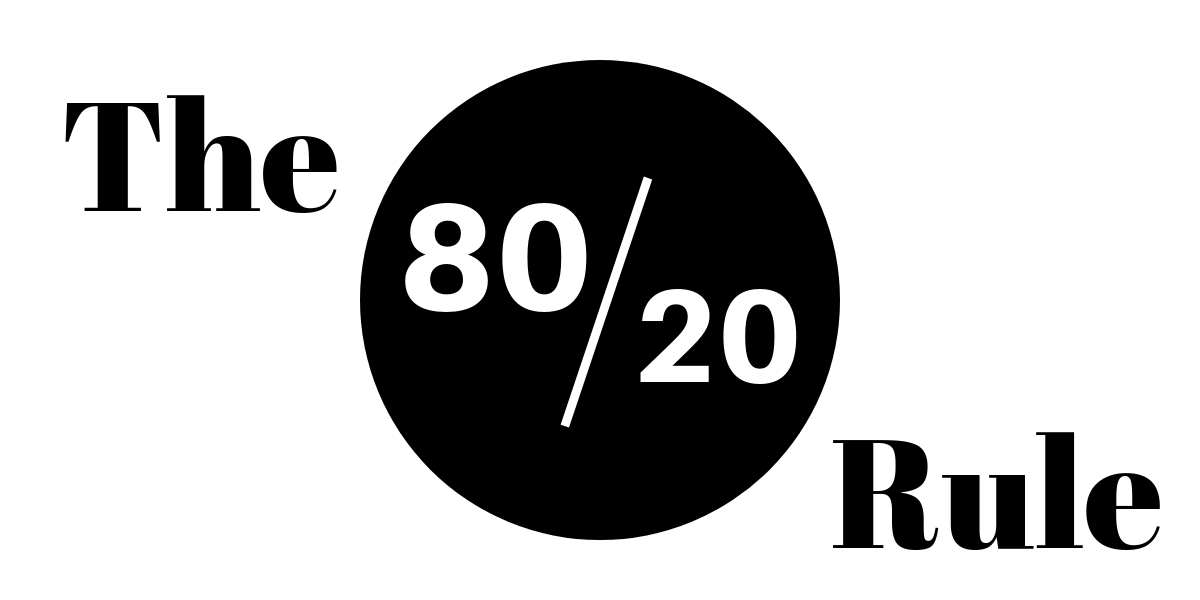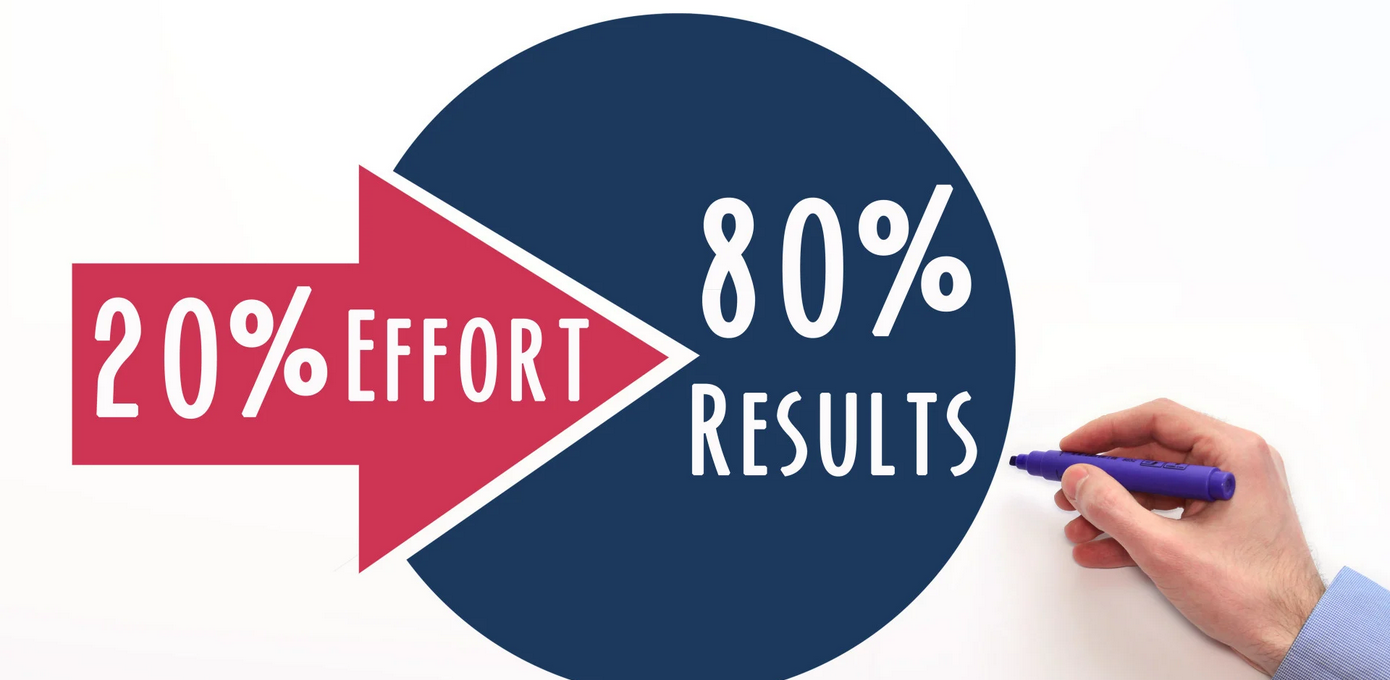What is the 80/20 Rule in Affiliate Marketing & How to Use It for Bigger Profits

What is the 80/20 rule in affiliate marketing? I figured this out the long way.
Back when I was testing different affiliate programs, I spread myself too thin—writing about everything, promoting every product I could find. I thought more meant better. But no matter how much effort I put in, the results weren’t adding up.
Then I noticed something. A handful of my articles were pulling in most of the traffic. A few products were making nearly all the sales. But the rest were just dead weight. That’s when it clicked—the 80/20 Rule.
This principle, also called the Pareto Principle, says 80% of results come from just 20% of efforts. It pops up everywhere. A small percentage of customers drive most of a company’s revenue.
A few marketing strategies bring in the bulk of the leads. And in affiliate marketing? A tiny portion of content, traffic sources, or products will generate most of the income.
I stopped wasting time on things that weren’t working. Instead of writing endless reviews for low-converting products, I focused on the ones that actually sold. Instead of chasing every traffic source, I doubled down on what brought in buyers. My results got better.
Most affiliates never realize this. They keep grinding, treating everything equally, hoping more effort will fix the problem. But when you apply the 80/20 Rule, everything shifts. You stop working harder and start working smarter. And that’s when real growth happens.
In this article, I’ll show you how to use the 80/20 Rule to grow your affiliate income without wasting time on things that don’t move the needle.
You’ll learn how to spot the 20% of efforts that bring in 80% of your results—and how to double down on what works. The goal? Less effort, bigger payouts, and a smarter way to scale. Let’s get into it.
Key Takeaways
- The 80/20 Rule (Pareto Principle) states that 80% of results come from 20% of efforts – In affiliate marketing, a small percentage of affiliates, traffic sources, or strategies drive most of the revenue.
- Top affiliates generate the majority of sales – Prioritize high-performing partners and provide them with better support and resources.
- Focus on high-converting traffic sources – Identify and invest in the most profitable channels rather than spreading resources too thin.
- Optimize high-performing content – Double down on the content that brings the most conversions while reducing focus on underperforming content.
- Eliminate or minimize ineffective efforts – Stop wasting time and budget on low-impact affiliates, promotions, or traffic sources.
- Regularly analyze and adjust your strategy – The 80/20 ratio isn’t static; continuously evaluate performance metrics to refine your approach.
- Diversification is still important – While focusing on the 20% that performs best, avoid over-reliance on a single source to mitigate risks.
By applying the 80/20 rule strategically, affiliate marketers can maximize profits while optimizing their time and resources efficiently.
Understanding the 80/20 Rule in Affiliate Marketing
Most of your results come from a small portion of your efforts. That’s the 80/20 rule, also called the Pareto Principle. In affiliate marketing, it means 80% of your revenue comes from just 20% of your affiliates, strategies, or content.

It’s not a perfect split, but the pattern shows up everywhere. A handful of affiliates drive most of the sales. A few traffic sources bring in most of the visitors. A small number of articles or videos generate the bulk of commissions.
How It Plays Out in Real Affiliate Programs
1. Top Affiliates Drive Sales: In most programs, a few affiliates dominate the leaderboard. They have the best traffic, the highest conversion rates, and a strong audience. The rest? They might send occasional clicks but barely move the needle.
2. A Few Traffic Sources Do the Heavy Lifting: You might be on ten platforms, but only one or two bring real results. Maybe organic search drives most of your sales while social media barely converts.
3. Only Some Content Makes an Impact: You could write 100 blog posts, but a handful will get all the traffic and commissions. The rest? They sit there, collecting dust.
Why 80/20 is Essential
Once you see this pattern, you stop wasting time on what doesn’t work. Instead of treating everything equally, you focus on the 20% that brings real results. Double down on winning strategies, optimize top-performing content, and build relationships with your best affiliates.
Affiliate marketing isn’t about doing everything. It’s about doing the right things.
Key Areas Where the 80/20 Rule Applies in Affiliate Marketing
The 80/20 rule isn’t just a theory—it’s how affiliate marketing actually plays out. A small chunk of your effort will drive most of your success. The key is knowing where to focus.
Let’s break it down.
1. Affiliate Partners
Not all affiliates pull their weight. If you run an affiliate program, you’ll notice a pattern—80% of your sales come from 20% of your affiliates.
For example, let’s say you have 100 affiliates promoting your product. Maybe only 20 of them are actively making sales, while the rest are just taking up space.
Instead of spreading your resources thin, invest in those top 20. Give them bonuses, higher commissions, and exclusive deals to keep them motivated. They’re the ones bringing in the money.
2. Traffic Sources

Not all traffic converts. Some sources will send a flood of visitors, but they won’t buy anything. Others might bring fewer people, but they’re ready to spend.
Let’s say you drive traffic from Facebook, Google SEO, YouTube, and TikTok. After checking your analytics, you realize that 80% of your affiliate sales come from Google SEO and YouTube.
Facebook and TikTok might get clicks, but they don’t turn into buyers. What do you do? Focus on Google SEO and YouTube. Create more content there, improve your rankings, and forget about traffic that doesn’t convert.
3. Content Performance
Ever notice how some blog posts or videos get all the attention while others sit there collecting dust? That’s the 80/20 rule at work.
You can write 100 blog posts, but only a few will drive real results. Maybe it’s that in-depth review or a well-optimized comparison post. Find what’s working and create more of it. Don’t waste time on content nobody reads.
For example, say you publish 50 blog posts on your site. After a few months, you check your traffic stats and see that only 10 of them are driving most of your affiliate commissions. Maybe it’s a detailed product review, a comparison post, or a well-targeted “best of” list.
Instead of writing more random content, double down on what works. Update those top posts, promote them harder, and create similar content to attract more buyers.
4. Promotional Strategies
Not every marketing tactic delivers results. A small percentage will bring in most of your sales. Maybe it’s email marketing, a killer landing page, or a specific discount strategy. Identify what’s working and do it better. The rest? Forget it.
For example, let’s say you’re using email marketing, social media, and paid ads. After testing, you notice 80% of your sales come from email campaigns and retargeting ads.
Social media posts might be fun, but they don’t drive real revenue. In this case, you’d focus on building your email list, refining your ad strategy, and ditching what isn’t working.
In the end, affiliate marketing isn’t about doing everything—it’s about doing the right things. Find the 20% that’s making you money and put your energy there. That’s how you win.
How to Apply the 80/20 Rule to Maximize Affiliate Marketing Success
In affiliate marketing, a small percentage of your efforts drive most of your success. That’s the 80/20 rule in action. A handful of affiliates, content pieces, or traffic sources bring in the bulk of your income. The key is knowing where to focus your energy to get the best results.
Here’s how.
1. Identify High-Performing Affiliates
Not all affiliates pull their weight. Some drive real revenue, while others barely make a dent. Find the top 20%—the ones generating the most sales—and focus on them. Give them better support, exclusive offers, and higher commissions. Keep them motivated, and they’ll keep making you money.
2. Optimize Traffic Sources
All traffic doesn’t have the same value. Some sources bring in buyers, while others just waste bandwidth. Look at your analytics. Which channels bring the best conversion rates? Focus there.
If Google search drives the most sales, double down on SEO. If Facebook ads bring high-value customers, scale those campaigns. Stop pouring money into low-performing traffic sources.
Recommended Reading: Best SEO Strategies for Affiliate Websites: How to Get Free Organic Traffic
3. Enhance Top-Performing Content
Some blog posts, videos, or social media posts bring in the bulk of your commissions. Improve those. Update them, add better calls to action, and test different offers. If a single article generates 50% of your affiliate sales, imagine what happens when you make it even better.
4. Eliminate Low-Impact Efforts
Most affiliate marketers waste time on things that don’t move the needle. Maybe it’s a social platform that never converts or an email sequence nobody opens. Cut the dead weight. If something doesn’t bring real results, stop doing it. Shift that time and energy into what works.
Affiliate marketing isn’t about working harder. It’s about working smarter. Use the 80/20 rule, and you’ll stop spinning your wheels and start seeing bigger profits with less effort.
Common Mistakes to Avoid When Using the 80/20 Rule
Some people swear by the 80/20 rule, but many get it wrong. They focus so much on top performers that they miss hidden opportunities or set themselves up for disaster. Here’s where they go wrong:
1. Ignoring the Potential of the Other 80%
Some affiliates look at their top performers and ignore everyone else. Big mistake. That remaining 80% still has potential. Some partners might need better incentives. Some traffic sources might convert better with small tweaks. If you ignore them, you could be leaving future top earners in the dust.
2. Over-Reliance on a Few Affiliates or Traffic Sources
Relying too much on one affiliate, one ad network, or one SEO tactic is risky. If that traffic source dries up, you’re in trouble. A Google algorithm change, a banned ad account, or an affiliate dropping out can wreck your income overnight. Always test new sources so you’re not stuck if something goes south.
3. Failing to Reassess and Adapt Over Time
What works today won’t always work tomorrow. Some people find a winning formula and ride it too long. Then one day, conversions drop, and they have no backup plan. Markets change. Competition shifts. You have to keep testing and tweaking. Otherwise, you’ll wake up one day wondering where all your commissions went.
4. Chasing Short-Term Wins Instead of Long-Term Growth
Some affiliates milk a high-performing campaign for all it’s worth but never think about sustainability. They get comfortable with quick wins and don’t build real relationships with their audience or partners. If your whole business relies on one-off promotions, you’re not really building anything. Smart affiliates play the long game.
5. Misreading the Data
Not all traffic that brings in big commissions is good traffic. Some affiliates focus too much on high payouts and ignore metrics like retention or refund rates. If you’re making a lot on the front end but customers aren’t sticking around, you’re setting yourself up for problems. High churn and unhappy buyers will kill long-term profits.
The 80/20 rule is powerful, but only if you use it right. Focus on the winners, but don’t neglect potential growth. Diversify, stay flexible, and keep an eye on the big picture. That’s how you make it work for the long haul.
Conclusion
The 80/20 rule isn’t just some theory—it’s the reality of how affiliate marketing works. A small chunk of your efforts will bring in the bulk of your results. The key is spotting those top-performing links, content pieces, and traffic sources, then focusing your energy there.
Most affiliates waste time on things that barely move the needle. Don’t be one of them. Regularly check your data, find what’s working, and double down. Cut out what isn’t pulling its weight. The more you fine-tune, the more profitable your business becomes.
This approach isn’t a one-time thing. It’s an ongoing process. Set aside time every month to review and adjust. The most successful affiliates aren’t the ones who do the most work—they’re the ones who do the right work.
Frequently Asked Questions
What is the 80/20 Rule in Affiliate Marketing?
The 80/20 rule (Pareto Principle) means 80% of your results come from 20% of your efforts. In affiliate marketing, most of your income likely comes from a small number of links, content pieces, or traffic sources. Identifying and focusing on these high-performing areas can boost your profits.
How Do I Find the 20% That Drives 80% of My Profits?
Check your analytics. Look at clicks, conversions, and revenue per source. Identify which pages, traffic channels, or products generate the most income. These are your gold mines—put more effort into them while cutting what doesn’t work.
Should I Stop Promoting the Other 80%?
Not necessarily. Some underperforming links or pages might still have potential. But if something consistently fails, it’s better to stop wasting time on it. Shift resources to what’s already bringing in the money.
How Can I Apply the 80/20 Rule to Content Creation?
Double down on what works. If certain topics, keywords, or formats drive traffic and sales, create more content around them. Optimize existing high-performing posts and turn them into even stronger moneymakers.
How Often Should I Analyze and Adjust My Strategy?
At least once a month. Trends change, and what works today might not work next year. Regularly reviewing your data helps you stay ahead, focus on profitable strategies, and cut dead weight before it drains your time and money.






